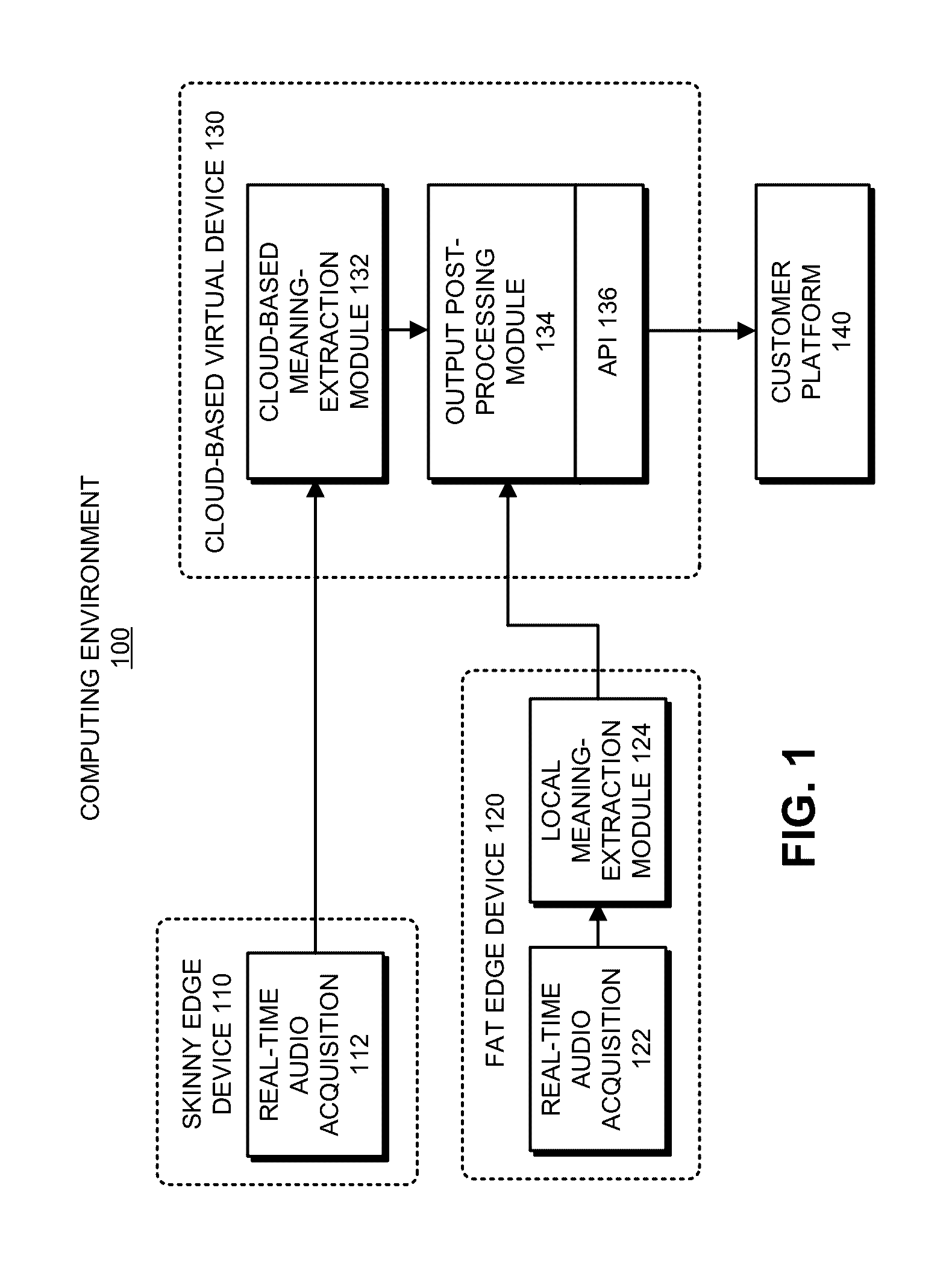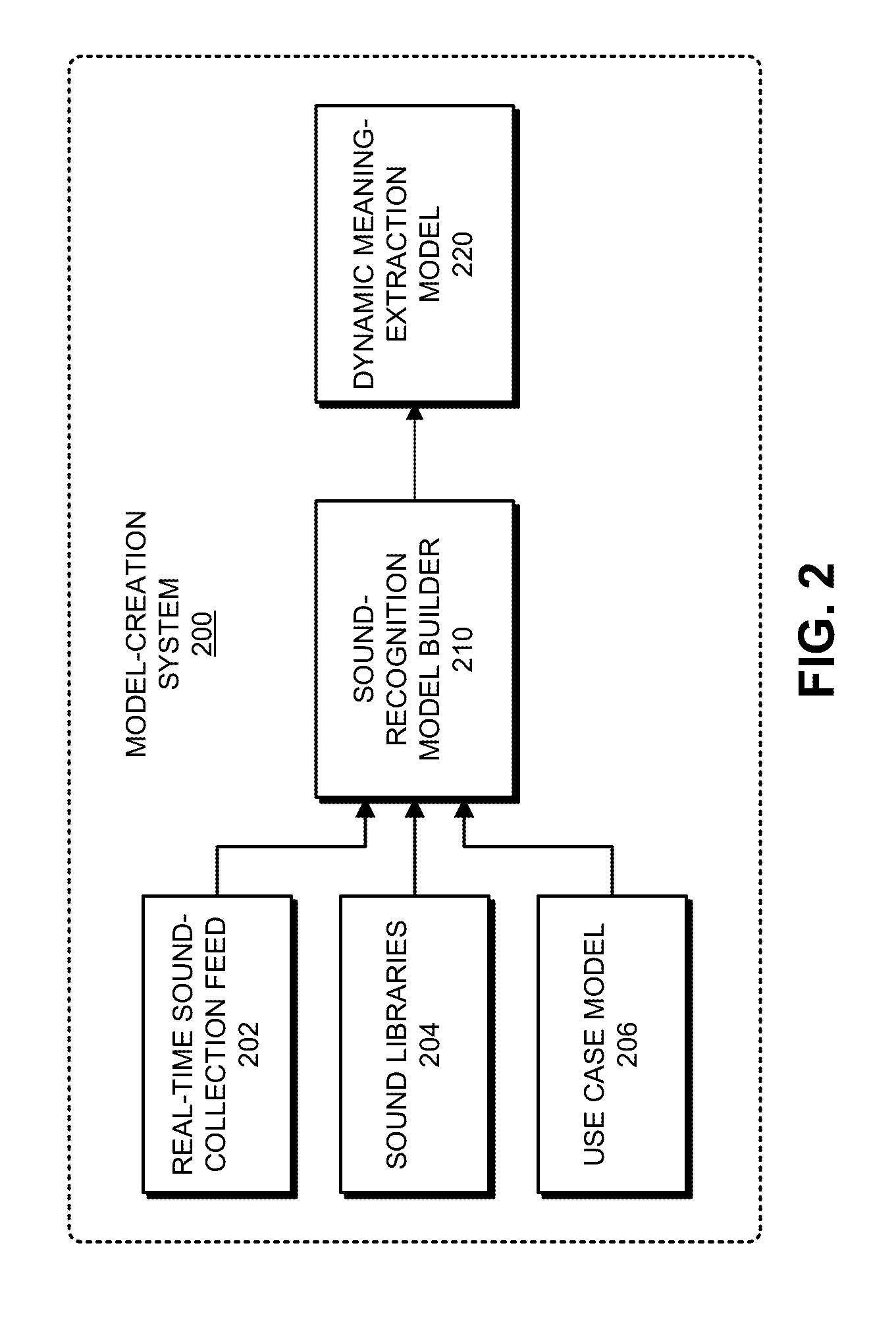Employing user input to facilitate inferential sound recognition based on patterns of sound primitives
- Summary
- Abstract
- Description
- Claims
- Application Information
AI Technical Summary
Benefits of technology
Problems solved by technology
Method used
Image
Examples
example
[0059]FIG. 7 presents a diagram illustrating an exemplary sound-recognition process in accordance with the disclosed embodiments. The system starts with an audio stream to be recognized comprising raw sound 701. Next, as described above with reference to FIG. 5, the system extracts a set of sound features 702 from the raw sounds 701, wherein each sound feature is associated with a numerical value. The system then combines patterns of sound features into higher-level sound features 704, such as “_smooth_envelope,” or “_sharp_attack.” These higher-level sound features 704 are then combined into sound-primitive events 706, which are associated with semantic labels, and have a meaning that is understandable to people, such as a “rustling, a “blowing” or an “explosion.” Next, these sound-primitive events 706 are combined into higher-level events 708. For example, rustling and blowing sounds can be combined into wind, and an explosion can be correlated with thunder. Finally, the higher-le...
PUM
 Login to View More
Login to View More Abstract
Description
Claims
Application Information
 Login to View More
Login to View More - R&D
- Intellectual Property
- Life Sciences
- Materials
- Tech Scout
- Unparalleled Data Quality
- Higher Quality Content
- 60% Fewer Hallucinations
Browse by: Latest US Patents, China's latest patents, Technical Efficacy Thesaurus, Application Domain, Technology Topic, Popular Technical Reports.
© 2025 PatSnap. All rights reserved.Legal|Privacy policy|Modern Slavery Act Transparency Statement|Sitemap|About US| Contact US: help@patsnap.com



